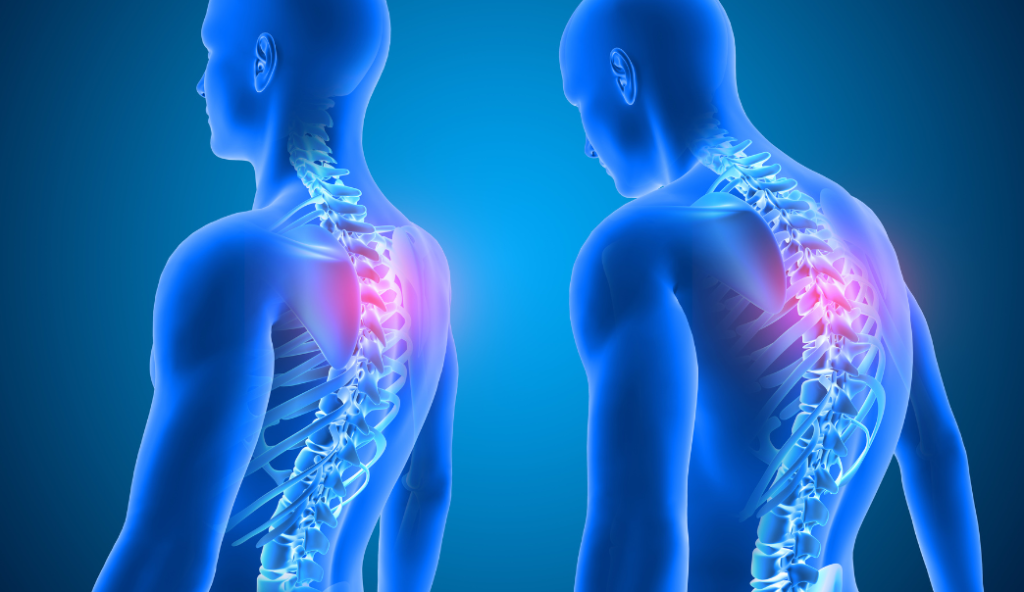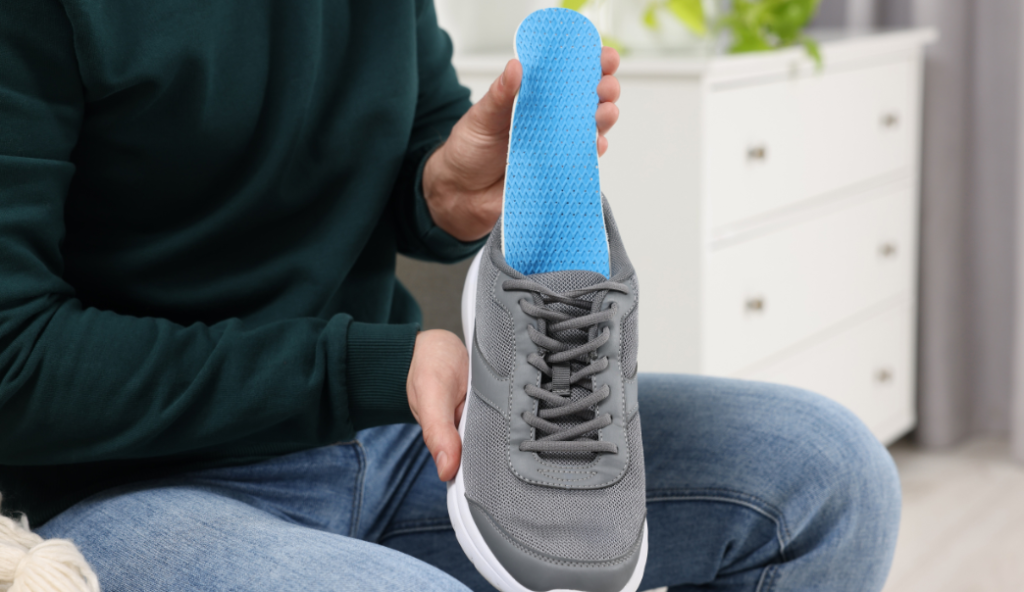Choosing the right footwear plays a crucial role in maintaining a healthy spine and optimal posture. It may seem like a small detail, but our shoes can significantly impact our spinal alignment and overall well-being.
In this article, we will explore the connection between footwear and spinal health, discuss the criteria for selecting spine-friendly shoes, examine the impact of heels on posture and back pain, delve into the role of orthotic inserts in spinal alignment, and share inspirational success stories of transformations with the right footwear.
The Connection Between Footwear and Spinal Health
Believe it or not, our shoes can affect our feet and spine. Our feet provide the foundation for our entire body, and any imbalances or misalignments can cause a ripple effect, leading to back pain, poor posture, and even spinal problems. Improper shoes strain feet, causing unstable spine and back discomfort.
Additionally, certain types of footwear can alter our gait or walking mechanics, further impacting our spinal alignment. For instance, high heels can throw off our balance and force our bodies into unnatural positions, leading to increased pressure on the lower back and an increased risk of developing conditions like sciatica. It is crucial to understand that our feet and spine are intricately connected, and investing in suitable footwear can go a long way in maintaining a healthy posture and spine.
But what exactly should we look for in spine-friendly footwear? Let’s dive deeper into two key aspects: arch support and cushioning.
The Role of Arch Support
One essential aspect of spine-friendly footwear is adequate arch support. The arches of our feet act as shock absorbers, distributing the impact of each step we take. When our shoes lack proper arch support, it can lead to overpronation or underpronation, where the foot rolls too far inward or outward with each step. These imbalances can throw off the body’s alignment, causing strain on the muscles, tendons, and ligaments in the feet, legs, and back.
So, how can we ensure we have the right arch support? It starts with understanding our foot type. There are three main types: high arches, normal arches, and flat feet. Each type requires a different level of arch support to maintain proper spinal alignment during everyday activities. By choosing shoes that offer arch support tailored to your foot type, you can prevent excessive strain on your feet and promote a healthier spine.
The Importance of Cushioning
In addition to arch support, cushioning plays a vital role in protecting our spine. Shoes with adequate cushioning can absorb the shock of walking or running, reducing the impact on the spine. Whether on your feet all day at work or engaging in physical activities, wearing shoes with proper cushioning can significantly decrease the stress on your vertebral column.
When it comes to cushioning, it’s important to find a balance. While too much cushioning may feel comfortable initially, it can lead to instability and a lack of support. On the other hand, insufficient cushioning can result in excessive pressure on the spine. Look for footwear for comfort and shock absorption to support your spinal health and overall well-being.
Remember, caring for your feet is not just about comfort; it’s about maintaining a healthy spine. By investing in shoes that provide proper arch support and cushioning, you can take proactive steps toward preventing back pain, improving posture, and promoting overall spinal health.

Criteria for Selecting Spine-Friendly Shoes
Now that we understand the connection between footwear and spinal health let’s delve deeper into the fascinating world of shoes that promote proper spine alignment and posture. The right footwear provides comfort, support, and stability to keep your spine in optimal condition. Here are a few additional factors to keep in mind:
Shoe Fit and Size
The importance of proper fit and size cannot be overstated when selecting spine-friendly shoes. Ill-fitting shoes can lead to various foot problems, affecting your gait and spinal alignment. Picture this: your toes, cramped and suffocated, yearning for freedom. To avoid such a tragic scenario, ensure that you have about a thumb’s width of space between your longest toe and the end of the shoe. This allows for natural movement and prevents the unfortunate crowding of the toes.
Arch Support and Cushioning
As we embark on our quest for the perfect spine-friendly shoes, let us not forget the crucial role of arch support and cushioning. These unsung heroes are the backbone or the arch of our footwear choices. Seek out shoes that offer built-in arch support and cushioning in the midsole, providing stability and shock absorption. Imagine walking on clouds, each step a gentle embrace for your spine. For those with specific foot conditions or alignment issues, fear not! Orthotic inserts or custom insoles can come to the rescue, providing an extra layer of personalized comfort.
Heel Height and Shoe Type
Ah, the allure of heels! While they may elevate our style, they can also dramatically impact our posture. Picture this: a towering pair of stilettos defying gravity, but at what cost? Your body is thrown out of alignment, and your lower back is burdened with excessive pressure. Fear not, dear fashionistas, for moderation is the key to maintaining a spine-friendly shoe collection.
Opt for heels of moderate height or consider embracing the elegance of flats or shoes with low heels for those extended periods of grace and poise. And let us not forget the importance of choosing appropriate shoe types for our activities.
Running shoes, for example, are designed to provide the necessary support and cushioning for high-impact exercise. In contrast, dress shoes may lack the required features for all-day wear, leaving your spine yearning for a more supportive companion.
So there you have it, dear readers, a more comprehensive guide to selecting spine-friendly shoes. Remember, your feet are the foundation upon which your spine stands, and choosing the right footwear is an investment in your long-term spinal health. Happy shoe shopping!
The Impact of Heels on Posture and Back Pain
High heels have long been a staple in many women’s wardrobes, but they come at a cost for spinal health. Wearing heels forces the body into an unnatural posture, with the spine being pushed forward and the lower back arched excessively. This misalignment can lead to immediate discomfort and long-term issues such as chronic back pain, shortened calf muscles, and changes in gait.
Moreover, the higher the heel, the greater the strain on the forefoot, putting pressure on the metatarsal bones and potentially causing conditions like Morton’s neuroma or stress fractures. It’s important to note that the negative effects of heels aren’t limited to women. Men who wear elevated dress shoes or boots without proper support can also experience similar postural imbalances and back pain.
While occasional wear of heels may not have significant consequences, prolonged and frequent use can take a toll on your spine. Choosing lower-heeled or flat shoes for daily activities and reserving high heels for special occasions is advisable. Your spine will thank you!
Orthotic Inserts and Their Role in Spinal Alignment
Orthotic inserts can be a game-changer in achieving proper spinal alignment for individuals with specific foot conditions or alignment issues. These custom-made inserts are designed to support and correct imbalances in the feet, improving overall posture and reducing back pain. Whether you have flat feet, high arches, or overpronation, orthotics can provide the necessary support to align your spine correctly.
It is essential to consult with a podiatrist or orthopedic specialist to determine the type of orthotic inserts that best suit your needs. They will assess your foot and gait mechanics, considering any underlying conditions or concerns, and recommend the most appropriate orthotics to support your spinal health and overall well-being.

Types of Orthotic Inserts
Orthotic inserts come in various forms, including over-the-counter options and custom-made inserts. Over-the-counter inserts are more readily available and can relieve general foot discomfort. However, custom orthotics offer higher support and correction, as they are designed specifically for your foot structure and alignment. These custom inserts are created from molds or digital scans of your feet and provide personalized support to address your unique needs.
Whether you opt for over-the-counter or custom orthotics, remember that they should enhance your comfort and alignment. It may take some time to adjust to wearing orthotic inserts, so gradually build up the amount of time you wear them daily. With proper use and patience, orthotics can help achieve optimal spinal alignment and alleviate back pain.
Transformations with the Right Footwear
Choosing the right footwear can make a difference in the lives of individuals struggling with spinal misalignments and persistent back pain. Countless success stories attest to the transformative power of investing in suitable shoes and making conscious footwear choices.
Many individuals have experienced relief from chronic back pain after switching to shoes with proper support and cushioning. They have noticed improved posture, decreased discomfort, and enhanced overall mobility. For some, orthotic inserts have been a game-changer, aligning their spine and allowing them to engage in activities they previously thought were impossible due to pain.
Remember, your journey towards spinal alignment and healthier posture begins with the shoes you choose to wear. You can take significant steps towards a healthier back and improved overall well-being by selecting footwear that provides the necessary support, cushioning, and alignment.
It’s Time To Start Choosing the Right Footwear
Choosing the right footwear for spine alignment and posture cannot be overstated. Our feet and spine are intricately connected, and our shoes can significantly impact our spinal health.
By understanding the connection between footwear and spinal alignment, considering the criteria for selecting spine-friendly shoes, being aware of the impact of heels on posture and back pain, and exploring the role of orthotic inserts in spinal alignment, we can make informed choices to support our spinal health.
Remember, investing in suitable footwear is an investment in your overall well-being. Choose shoes that provide proper arch support and cushioning, ensure a proper fit, and consider the type of shoe for different activities. Consult a specialist to determine the best orthotic inserts for your needs if needed.
In making conscious footwear choices, you can achieve optimal spinal alignment, improve your posture, and reduce the risk of back pain, enabling you to move through life with greater comfort, confidence, and vitality.



